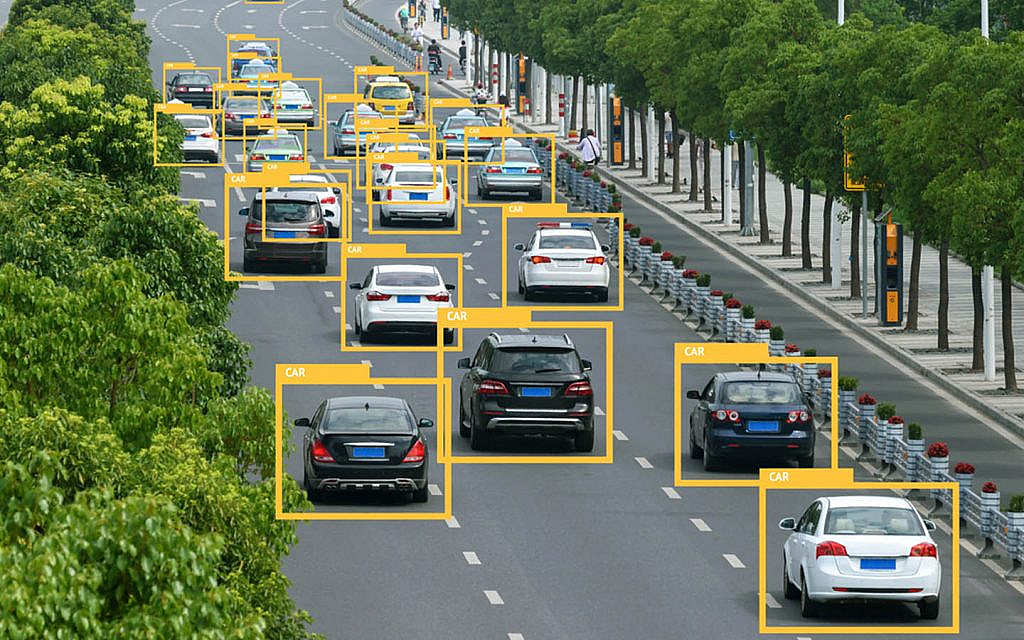“Get ready to shift gears and accelerate into the future! Self-driving cars are no longer just a concept, but a reality powered by Artificial Intelligence (AI). In this article, we’ll take you on a ride through the latest advancements in autonomous vehicles, revealing how AI is steering the wheel toward safer, smarter, and more efficient transportation. Join us as we explore the exciting world of self-driving cars and uncover the AI technology driving this innovation!” ARTIFICIAL INTELLIGENCE SELF-DRIVING CAR
Timeline of Key Milestones in AI-Powered Self-Driving Car Development

The journey to create AI-powered self-driving cars has been a long and winding road, filled with twists and turns. Let’s take a look at some of the key milestones that have brought us to where we are today: ARTIFICIAL INTELLIGENCE SELF-DRIVING CAR
1986:
The concept of self-driving cars was first introduced by Ernst Dickmanns, a German engineer who developed a robotic car that could drive on the autobahn at speeds of up to 60 mph.
2004:
The DARPA Grand Challenge was held, where a team from Stanford University developed a self-driving car called Stanley, which completed a 132-mile course through the desert without human intervention.
2009:
Google began its self-driving car project, now known as Waymo, with a team led by Sebastian Thrun. They developed a self-driving car fleet that has since logged millions of miles on public roads.
2015:
Tesla introduced Autopilot, a semi-autonomous driving system that enables cars to steer, accelerate, and brake independently.
2016:
Uber launched its self-driving car service in Pittsburgh, with a fleet of Volvo XC90s equipped with AI-powered sensors and software.
2020:
Waymo launched its self-driving taxi service in Phoenix, Arizona, allowing passengers to hail a ride using a mobile app.
These milestones represent significant achievements in the development of AI-powered self-driving cars. But it’s not just about the technology – it’s about the people behind it. Meet some of the pioneers who have dedicated their careers to making self-driving cars a reality:
Fei-Fei Li,
director of the Stanford AI Lab, who has developed AI systems for self-driving cars and is a leading advocate for AI safety and ethics. ARTIFICIAL INTELLIGENCE SELF-DRIVING CAR
Chris Urmson,
former head of Google’s self-driving car project, who has dedicated his career to developing AI-powered vehicles that can improve road safety. ARTIFICIAL INTELLIGENCE SELF-DRIVING CAR
Key Technologies: Sensors, GPS, and Computer Vision

Self-driving cars rely on advanced technologies to navigate roads, detect obstacles, and make decisions in real-time. Let’s dive into the key sensors, GPS, and computer vision systems that enable self-driving capabilities:
Sensors:
Lidar (Light Detection and Ranging):
Uses laser light to create high-resolution 3D maps of the environment, detecting obstacles and tracking motion. Example: Velodyne’s Lidar sensors are used in Waymo’s self-driving cars. ARTIFICIAL INTELLIGENCE SELF-DRIVING CAR
Radar:
Uses radio waves to detect the speed and distance of surrounding objects. Example: Tesla’s Autopilot system uses radar sensors to enable adaptive cruise control.
Cameras:
Capture images of the environment, detecting traffic lights, pedestrians, and lane markings. Example: Uber’s self-driving cars use cameras to detect and respond to hand gestures from pedestrians.
GPS:
Global Positioning System:
Provides location data and mapping information, helping self-driving cars navigate roads and plan routes. Example: TomTom’s HD Maps are used in autonomous vehicles to provide precise location data.
Computer Vision:
Machine Learning Algorithms:
Enable self-driving cars to interpret sensor data, detect patterns, and make decisions. Example: NVIDIA’s Drive platform uses AI-powered computer vision to detect and respond to objects in real time.
These technologies work together to create a 360-degree view of the environment, enabling self-driving cars to navigate complex scenarios safely and efficiently. But it’s not just about the tech – it’s about the people who develop and refine these systems:
Dr. Daniela Rus
director of the MIT Computer Science and Artificial Intelligence Laboratory (CSAIL), which has developed AI-powered vision systems for self-driving cars. ARTIFICIAL INTELLIGENCE SELF-DRIVING CAR
Dr. Jürgen Schmidhuber,
co-founder of NNAISENSE, who has developed neural networks for self-driving cars that can learn from experience. ARTIFICIAL INTELLIGENCE SELF-DRIVING CAR
AI Algorithms: Machine Learning, Deep Learning, and Neural Networks

Self-driving cars rely on advanced AI algorithms to interpret sensor data, make decisions, and navigate complex environments. Let’s explore the machine learning, deep learning, and neural networks that power autonomous vehicles:
Machine Learning:
supervised Learning:
Trains AI models on labeled data to recognize patterns and make predictions. Example: Waymo’s self-driving cars use supervised learning to detect pedestrians and predict their movement. ARTIFICIAL INTELLIGENCE SELF-DRIVING CAR
Unsupervised Learning:
Enables AI models to discover patterns in unlabeled data, improving their performance over time. Example: Tesla’s Autopilot system uses unsupervised learning to adapt to new driving scenarios.
Deep Learning:
Convolutional Neural Networks (CNNs):
Analyze visual data from cameras and sensors to detect objects and recognize patterns. Example: NVIDIA’s Drive platform uses CNNs to detect and respond to objects in real time. ARTIFICIAL INTELLIGENCE SELF-DRIVING CAR
Recurrent Neural Networks (RNNs):
Process sequential data from sensors and GPS to predict motion and plan routes. Example: Uber’s self-driving cars use RNNs to predict pedestrian movement and plan safe routes.
Neural Networks:
Artificial Neural Networks (ANNs):
Mimic the human brain’s neural structure to process complex data and make decisions. Example: Google’s self-driving car project uses ANNs to detect and respond to unexpected events.
These AI algorithms are developed and refined by talented researchers and engineers, like:
Dr. Andrew Ng,
founder of AI Fund and former head of Google Brain, who has developed AI-powered self-driving car systems. ARTIFICIAL INTELLIGENCE SELF-DRIVING CAR
Dr. Ian Goodfellow,
research scientist at Google, who has developed neural networks for self-driving cars that can detect and respond to complex scenarios. ARTIFICIAL INTELLIGENCE SELF-DRIVING CAR
Perception and Detection: How AI Interprets and Responds to Surroundings
Self-driving cars rely on advanced AI systems to interpret and respond to their surroundings, obstacles, and traffic. This complex process involves:
Object Detection:
Pedestrian Detection:
AI systems use cameras and sensors to detect pedestrians, predict their movement, and plan safe routes. Example: Waymo’s self-driving cars have detected and responded to over 10,000 pedestrian interactions in Phoenix alone.
Vehicle Detection:
AI systems detect other vehicles, tracking their speed, distance, and trajectory to anticipate potential collisions. Example: Tesla’s Autopilot system uses radar and cameras to detect vehicles and adjust speed accordingly.
Scene Understanding:
Lane Detection:
AI systems detect lane markings, curbs, and road signs to navigate roads safely. Example: Uber’s self-driving cars use HD maps and computer vision to detect lane markings and plan routes.
Obstacle Detection:
AI systems detect obstacles like construction, debris, or parked cars, planning alternative routes or stopping the vehicle if necessary. Example: Google’s self-driving car project has developed AI systems that can detect and respond to unexpected obstacles like a fallen tree.
Human Touch:
Dr. Raquel Urtasun,
founder of Waabi, who has developed AI-powered perception systems for self-driving cars that can detect and respond to complex scenarios.
Current Applications and Testing: Real-World Implementations of Self-Driving Cars

Self-driving cars are no longer just a concept – they’re being tested and implemented in various real-world scenarios. Let’s explore some exciting examples:
Pilot Projects:
Waymo One:
Waymo’s self-driving taxi service has been operating in Phoenix, Arizona, since 2018, with over 10,000 riders served. ARTIFICIAL INTELLIGENCE SELF-DRIVING CAR
Tesla Autopilot:
Tesla’s semi-autonomous driving system has been deployed in thousands of vehicles worldwide, with a cumulative 1 billion miles driven.
Testing Scenarios:
Urban Navigation:
Self-driving cars are being tested in complex urban environments, like San Francisco and New York City, to improve navigation and obstacle detection. ARTIFICIAL INTELLIGENCE SELF-DRIVING CAR
Rural Driving:
Testing in rural areas, like the American Midwest, focuses on adapting to unique road conditions and limited infrastructure.
Human Touch:
John Krafcik,
CEO of Waymo, who has overseen the development and deployment of Waymo One, revolutionizing the transportation industry. ARTIFICIAL INTELLIGENCE SELF-DRIVING CAR
Elon Musk,
CEO of Tesla, who has driven innovation in electric and autonomous vehicles, pushing the boundaries of transportation technology. ARTIFICIAL INTELLIGENCE SELF-DRIVING CAR
Future Prospects and Challenges: The Road Ahead for Self-Driving Cars
As AI-powered self-driving cars continue to evolve, they promise to transform the transportation landscape. Let’s explore the potential benefits, hurdles, and future developments in this exciting field:
Potential Benefits:
Improved Safety:
Self-driving cars can reduce accidents by up to 90%, saving thousands of lives.
Enhanced Mobility:
Self-driving cars can provide independence for the elderly and disabled.
Increased Efficiency:
Self-driving cars can optimize traffic flow, reducing congestion and emissions.
Hurdles:
Regulatory Frameworks:
Governments must create and refine regulations to ensure safety and privacy.
Public Acceptance:
Gaining trust and acceptance from the public is crucial for widespread adoption. ARTIFICIAL INTELLIGENCE SELF-DRIVING CAR
Cybersecurity:
Protecting self-driving cars from cyber threats is essential.
Future Developments:
Advanced Sensor Technologies:
Next-generation sensors will enhance perception and navigation capabilities.ARTIFICIAL INTELLIGENCE SELF-DRIVING CAR
Edge Computing:
Faster processing and reduced latency will enable real-time decision-making. ARTIFICIAL INTELLIGENCE SELF-DRIVING CAR
Vehicle-to-Everything (V2X) Communication:
Self-driving cars will communicate with infrastructure and other vehicles for enhanced safety and efficiency.
Human Touch:
Dr. Gill Pratt,
CEO of Toyota Research Institute, which is developing AI-powered self-driving cars that prioritize safety and mobility.
Amitai Ziv,
director of the Israeli Autonomous Vehicle Initiative, who is driving innovation in self-driving car technology and regulation. ARTIFICIAL INTELLIGENCE SELF-DRIVING CAR
Moral and Social Implications: The Ethics of AI-Driven Decision-Making in Self-Driving Cars

As self-driving cars become a reality, they pose important moral and social questions. How do we ensure AI-driven decision-making aligns with human values? Let’s explore the ethical implications:
The Trolley Problem:
** Sacrifice one or save many?** Self-driving cars may face similar dilemmas, forcing AI systems to make difficult choices. ARTIFICIAL INTELLIGENCE SELF-DRIVING CAR
Uber’s Fatal Accident:
In 2018, an Uber self-driving car struck and killed a pedestrian, raising questions about liability and moral responsibility.
Tesla’s Autopilot Decision:
Tesla’s AI system prioritized the safety of its occupants over pedestrians, sparking debate about the ethics of such decisions.
Human Touch:
Dr. Patrick Lin,
director of the Ethics + Emerging Sciences Group, who has developed frameworks for ethical AI decision-making in self-driving cars.
Dr. Susan Anderson,
philosopher and AI ethicist, who has written extensively on the moral implications of AI-driven decision-making.
Conclusion: AI’s Impact on Transportation
AI has transformed the automotive industry, improving efficiency, safety, and convenience. Autonomous vehicles and smart manufacturing have revolutionized transportation.
Examples:
Waymo’s self-driving taxis
Tesla’s Autopilot system
Innovators:
Elon Musk
Dr. John Krafcik


Pingback: AUTONOMOUS CAR PPT - aitechverge.com
ok